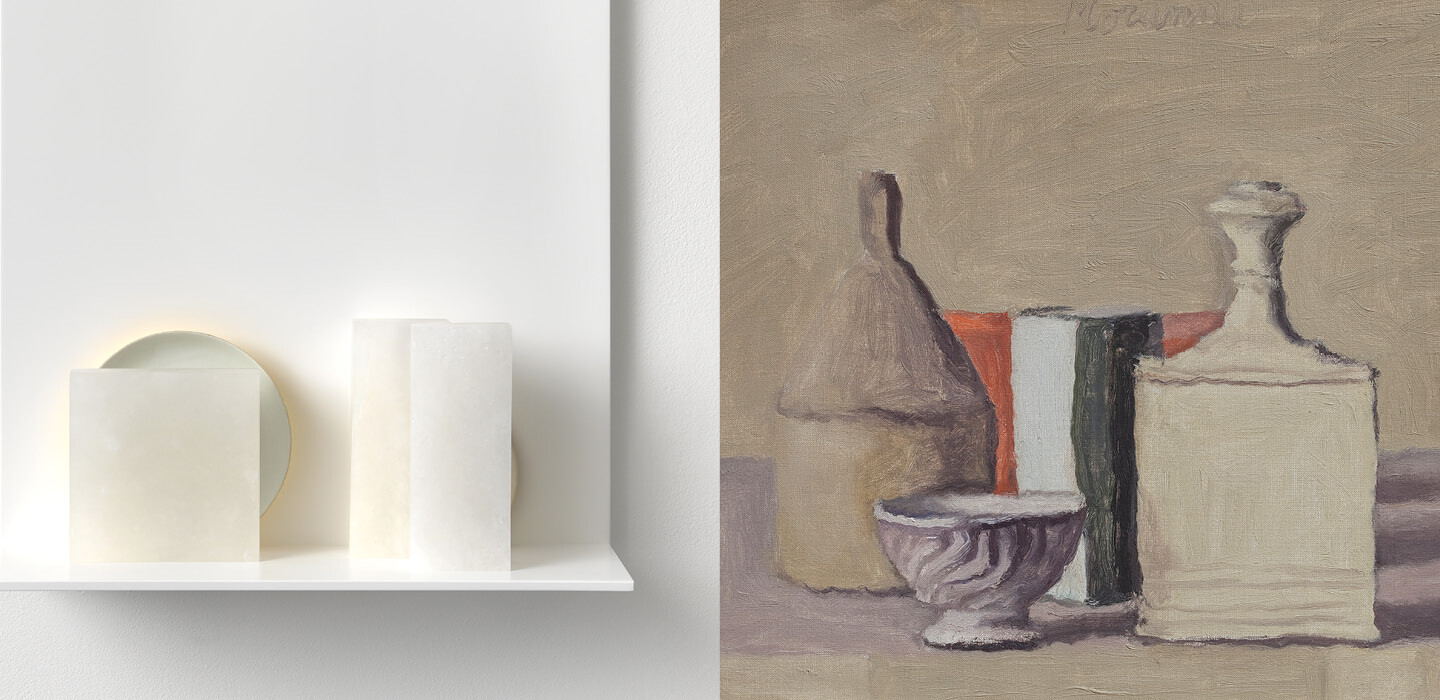Morandi / Edmund de Waal
April 7–October 1, 2017
April 7 marked the opening of Artipelag’s major summer exhibition 2017. Here, contemporary artist and writer Edmund de Waal meets renowned Italian painter Giorgio Morandi, whose oeuvre largely consists of still life paintings of pottery. However, it is not ceramics that unites the two artists, but rather the encouragement of mindful viewing and contemplation.
Giorgio Morandi (1890–1964) is one of the great protagonists of modern Italian art. Morandi has assumed cult status, especially within circles of art connoisseurs, and has been described as “the artists’ artist.” Transgressing generations, Morandi has inspired artists, authors, poets, designers and photographers and continues to do so to this day. Filmmakers and presidents can also be added to the list, where Federico Fellini’s classic La Dolce Vita is one of the more illustrious examples, as is Barack Obama’s inclusion of two Morandi paintings in the White House collection.
To name a few examples, Giorgio Morandi was showcased at Tate Modern in London, 2001. This exhibition then toured to Musée d’Art Moderne de la Ville de Paris the following year. The Metropolitan Museum of Art in New York also dedicated a solo show to Morandi in 2008. Morandi has never been substantially showcased in Sweden, nor in the Scandinavian region.
The exhibition at Artipelag highlights 50 works from Morandi’s career, produced between 1921 to 1963. A significant portion of the Morandi paintings featured in the exhibition are still life paintings of ceramic household items. However, a handful of landscape paintings are also included. The paintings are complemented by drawings, etchings and watercolors, which illustrate Morandi’s artistic range.
Morandi led a domestic and routine bound life. He rarely left his hometown Bologna, where he lived most of his life with his mother and three sisters. Morandi also served as a Professor at the Accademia di Belle Arti di Bologna for 26 years. His motifs are likewise recurring—where similar still lifes and landscapes constitute the vast majority of his oeuvre, well over a thousand oil paintings in total.
Over half of the Morandi works shown in the exhibition at Artipelag, are generously lent to us by Museo d’Arte Moderna di Bologna.
Edmund de Waal (b. 1964) is a British artist and writer. To a wider audience, de Waal is known for his best-selling novel The Hare with Amber Eyes, which has been translated into over 28 languages. On the international art scene, de Waal is known for his large-scale installations of porcelain vessels, which are informed by his passion for architecture, space and sound.
De Waal’s works have been exhibited internationally at institutions such as the Royal Academy of Arts in London, Kunsthistorisches Museum in Vienna and Gagosian Gallery in London and Los Angeles. Characteristic for de Waal’s installations is a shifting focus that moves from each object to the series of objects, the space that is left between, and how the viewer’s gaze flows through the artwork.
This exhibition is de Waal’s first in Sweden and will feature close to thirty works, made between 2013 and 2017. The exhibition will also include several new works made in response to Morandi, whom de Waal has often cited as a key artistic inspiration. Furthermore, de Waal has produced a text piece about Morandi, written directly onto the gallery walls of Artipelag.
”Perhaps it is assumed that the unifying link between Morandi and de Waal is the ceramic objects. However, that is not the case. Neither of the artists is particularly fascinated by the objects themselves, but rather by the contexts and presentation of them. What is of interest is how the objects are brought together, where they are placed, from where they can be viewed and how they are illuminated or darkened.”
–Bo Nilsson, Artistic Director of Artipelag.
The exhibition will is curated by Bo Nilsson in collaboration with Edmund de Waal. An interview where Edmund talks about his artistry and the exhibition can be found by clicking here.



